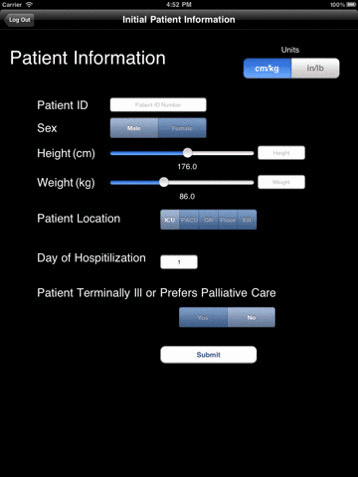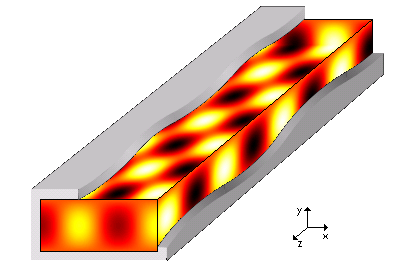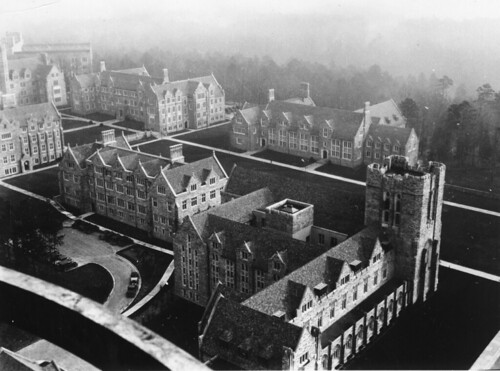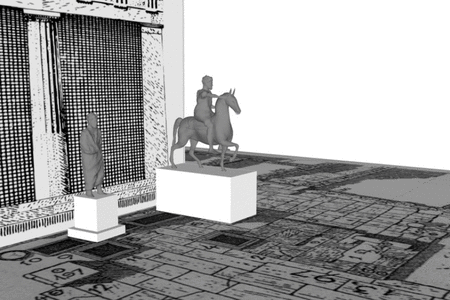
This computer generated image highlights how strange space would look if you could fly right up to a black hole. The effect of gravity on light causes some very unusual visual distortions. Credit & Copyright: Alain Riazuelo.
By Ashley Yeager
If a black hole is the eye of a galaxy, then Duke mathematician Arlie Petters is its optometrist.
Petters along with his colleagues, visiting scholar Amir Aazami and Rutgers astronomer Charles Keeton, have written the prescription, or mathematical equation, to describe the lens of a spinning black hole.
The new equation provides astronomers with an easier way of calculating what’s going on around a spinning black hole, says Harvard astrophysicist Avi Loeb, who was not involved in the research.
Astronomers typically classify black holes into two types, static or spinning.
Static black holes are easier to describe mathematically, which is why most previous studies describing a black hole’s action on light did not include a spin variable.
In reality, though, everything is in motion. Stars, planets, even black holes, spin. “As scientists, we need to add that spin into the equation if we are going to try to explain spinning black holes as an element of nature and how they work on a grand scale,” Petters says.
To describe black holes mathematically, Petters and his team had to first consider how elements of nature distort light. On Earth, air, water, glass and even our eyes alter how we interpret patterns of light.
In the case of our eyes, doctors can describe the distortion with a “lensmakers equation,” which underlies how they write precise prescriptions for our contacts or glasses.
In space, it’s gravity that bends light. Black holes have so much gravity due to their extreme mass that they can pull particles of light onto new paths. That bending and pulling of light acts as a cosmic lens creating cosmic mirages like Einstein rings.
The mirages or effects of the lensing can convey a lot of information about the universe, such as its age and the nature of dark matter. They also reveal details about the black holes themselves, Petters says.

This Hubble Space Telescope image shows a double Einstein ring. Credit: NASA
But, to the decode the mirages, astronomers need a precise prescription of the lenses creating them, just like we need prescription lenses to see our world more clearly.
In the past, astronomers would calculate the characteristics of a black hole lens using the equation for a static black hole. Or, they would use heavy-duty computer simulations or other painstakingly difficult methods to track particle trajectories and describe the lensing effects.
The new prescription Petters and his team has written, however, allows astronomers to calculate certain characteristics of a black hole by observing it and recording its mass and lensing effects. The researchers can then solve the lensmakers equation for the spin of the black hole. Petters and his colleagues describe the equation in two papers published in the Journal of Mathematical Physics.
Aside from making it easier to study black holes, the new equation also gives scientists another way to test Albert Einstein’s theory of gravity.
It is important to test Einstein, just as scientists continued to test Newton’s theory of gravity, Petters says. “We need to find any discrepancies in Einstein’s theory in order to push beyond it and to continue to comprehend and to appreciate the structure of the universe around us.”
Citations
A. B. Aazami, C. R. Keeton, and A. O. Petters. Lensing by Kerr Black Holes. I. General Lens Equation and Magnification Formula. J. Math. Phys., vol 52, (2011). doi:10.1063/1.3642614
A. B. Aazami, C. R. Keeton, and A. O. Petters. Lensing by Kerr Black Holes. II. Analytical Study of Quasi-Equatorial Lensing Observables J. Math. Phys., vol 52, (2011). doi:10.1063/1.3642616















